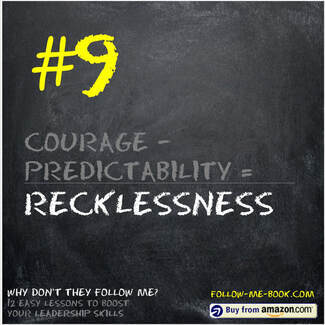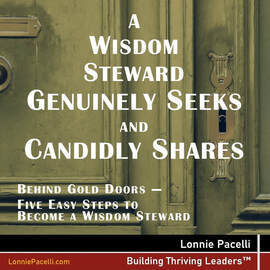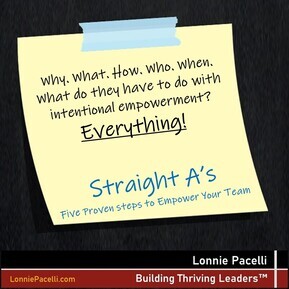Lonnie Pacelli's Blog, page 12
January 27, 2024
O Sponsor, Where Art Thou? 5 Ways to Ensure Sponsor Engagement
 No show, third in a row.
No show, third in a row.Anna, a PM, holds a weekly Zoom status meeting with Jade, the project sponsor. At the beginning of the project, Jade was a great partner and a strong supporter for Anna.
As the project went on, Jade’s involvement became more and more sporadic. Sometimes she responded to emails, other times she didn’t. Anna sent Jade status reports and rarely got responses. The rest of the project team noticed Jade’s declining involvement and was growing concerned. “Does Jade still care?” Anna would hear from the team.
Anna, a professional, did her best to keep the team motivated and engaged, but she too was wondering what to make of Jade’s disappearing act.
*** *** ***
I’ve been a sponsor, worked as a PM with sponsors, and advised both sponsors and PMs. By and large, sponsors and PMs are both trying to do the right thing—understand a problem, figure out how to solve it, and work together to implement a solution that addresses the problem.
Even with the best of intentions of all concerned, the sponsor/PM dance can feel more like one is doing a jitterbug and the other a waltz. Often, it’s the PM who sees the difference and has trouble getting the sponsor to take the same steps. This is not only frustrating, but can materially impact—if not completely tank—the project.
Before we get too far down the road on this topic, I’d like to lock down a number of assumptions regarding the sponsor:
Read more at ProjectManagement.com
Published on January 27, 2024 02:26
January 20, 2024
Free 1/23-24: The Leadership Greenhouse
 Free 1/23-24: The Leadership Greenhouse
Free 1/23-24: The Leadership GreenhouseGet it at https://amzn.to/2S002Y0
#freebook #teamwork #leadership #kindle #kindlefire #ebooks #ebook #Kindlefreebooks #Kindledeals #FREE #mustread #goodreads #greatreads #freebie #freebies #kindlebook #projectmanagement #leadership #PMI
Published on January 20, 2024 02:27
When Are You Coming Home? Five Practical Tips To Realizing Work/Life Balance
 So let’s talk about over-used terms for a minute.
So let’s talk about over-used terms for a minute. If you’ve been in the business world for any length of time you’ve likely heard your management espouse the desire for employees to achieve greater work/life balance. Many U.S. companies have adopted programs to help employees strike a better life balance by providing health club benefits, entertainment discount programs, and additional time off for events such as the birth of a child. Despite all this, Americans are of the most overworked and flat-out busy people on earth, recently surpassing the Japanese and long surpassing the Europeans. With all this discussion of work/life balance, how can we in the U.S. also be of the most overworked people in the world? The answer is pretty simple; many of us talk work/life balance, but don’t live work/life balance primarily because we don’t know how to do it.
First let’s get clear on the primary purpose of achieving work/life balance. It’s about minimizing stress in your life. Much of the stress in a typical person’s life is derived from work. Stress also comes from non-work activities as well. You can say you’ve got work/life balance, but in addition to working full-time, you might participate in many activities with the kids, volunteer at the local homeless shelter, and exercise five days a week. If you’re feeling stressed and tired, you haven’t achieved the primary intent of work/life balance, which is to reduce stress. All you have done is balanced the degree of stress you have in your work life with the stress you have in your non-work life. But at least the stress is balanced...
To realize a practical work/life balance, consider the following tips:Consciously (and honestly) decide what is really important - Saying that work/life balance is important is one thing; truly meaning it is a different game altogether. You may want to believe you place other things above work, but wanting to believe it simply doesn’t mean it’s so. Make a conscious, realistic declaration on where your priorities lie, then examine your behaviors or ask a friend, relative, significant other, or spouse. Taking the first step toward the quest for work/life balance means eliminating the gap between what you desire and what you do.Make your calendar a life thing, not just a work thing - Integrate important personal activities into your calendar. Examples of things to schedule include exercise, being home at a specific time for dinner, and kids’ activities. Also include items such as important meetings that your spouse or significant other needs to attend which require you to be at home with the kids or to take junior to the dentist.Measure success in results, not hours - Those who measure success based on hours worked will prioritize hours over results and tend to be less motivated to figure out how to get more work done in less time. Those who measure success based on results are more likely to figure out better ways to do things, prioritize their work, and get home in time for dinner. Don’t use the clock as your gauge of success; use the results you deliver as your success yardstick.Don’t succumb to peer pressure - From our earliest years, we are exposed to peer pressure. The “I dare you’s” from our youth become “Who’s got a bigger house” or “Who drives a nicer car” as adults. Look, just because a peer works 18 hours a day doesn’t mean he or she gets more done or is more effective. It just means that your peer chooses to run the hours race because he or she feels it is the best means to get ahead. Don’t let your peers’ actions pressure you to run the wrong race. Just stay focused on providing meaningful results that provide value to the organization.Don’t take on too much “life” in work/life balance - Achieving work/life balance doesn’t mean you cram more and more stuff into the life side of the equation to balance out a high-octane work life. Achieving good work/life balance means doing both in moderation and minimizing the stress in your life. You could be working a 40-hour work week and still be stressed out because of the non-work activities you’ve committed to. Doing too much life can be just as stressful to you and your loved ones as doing too much work. Don’t feel obligated or pressured to fill up every hour of your week with life activities. Doing both in moderation helps you attain the key benefit of work/life balance; a low-stress life.
Realizing the quest for work/life balance means first doing some serious soul searching and coming to grips with your true life priorities. If you acknowledge you are a workaholic and don’t want to change, then by all means work 18-hour days. If you do want to change, though, you need to accept the challenge head-on and get on the road to a more balanced lifestyle. You may be surprised at how your quality of life increases and how little it truly impacts your career aspirations.
Want more? Check out my self-study seminar to help you get better work-life balance.
Lonnie Pacelli
Keynote Speaker | Board Director | Autism Advocate | Author | Project Management Expert | Microsoft/Accenture Veteran
See his books on Amazon.
Published on January 20, 2024 02:27
January 11, 2024
How to Align Relationship Expectations
 As of this article, my wife and I are in process of buying a car. We are looking for a very specific model with “must-have” features, like exterior color and interior appointments. At one dealer in particular, the salesperson was clearly trying to endear himself to me, wanting to talk about things that I wouldn’t generally talk about with someone I just met—and had nothing to do with buying a car.
As of this article, my wife and I are in process of buying a car. We are looking for a very specific model with “must-have” features, like exterior color and interior appointments. At one dealer in particular, the salesperson was clearly trying to endear himself to me, wanting to talk about things that I wouldn’t generally talk about with someone I just met—and had nothing to do with buying a car.Now, I’m a relational guy and love to learn more about people—but I can also tell when someone is manipulating me. His dis-ingenuousness made me not want to work with him. I was looking to buy a car and wanted to stay focused on what needed to be done to buy the car, but the salesperson was trying to work me. I ended up walking away and will avoid doing business with the salesperson in the future.
You might be asking what buying a car has to do with being a project manager. So much of what a project manager does is about relationships—guiding and working with others to deliver something on time, on budget, and within scope.
However, relationships aren’t one size fits all. Depending on the situation and the parties involved, I’ve found that relationships can take on one of three forms, as follows:
Read more at ProjectManagement.com.
Published on January 11, 2024 02:41
January 6, 2024
Doing Things Right Versus Doing The Right Thing
 In an earlier leadership role I had been striving to create focus and accountability within each of our major work areas. The team responded beautifully with doing their best to adjust to roles, to stay focused on their areas, and to minimize confusion by stepping across boundaries. They did exactly as I asked.
In an earlier leadership role I had been striving to create focus and accountability within each of our major work areas. The team responded beautifully with doing their best to adjust to roles, to stay focused on their areas, and to minimize confusion by stepping across boundaries. They did exactly as I asked.We were in a team meeting and I could see that there was erupting confusion around contacting customers in an effort to close some sales. There was a lot of respect for my sales & marketing manager in not stepping in on her turf when it came to customers. Where the problem arose, though, was in the fact that the team was confused as to who was supposed to be following up on some key sales activity that had begun prior to our organizational re-alignment.I had failed to place better focus on ensuring there was a clear transition of responsibilities for these key customers. As a result, the team was doing things right, but because of my direction the team wasn't doing the right thing in closing sales. In the end, we got things straightened out but not without some regrouping and after-the-fact clarity definition.
Too many times in organizations we get hyper focused on following the rules: enter an order this way, follow up on an incident like this, fill out a form like so.
Following rules are good, but when we allow following the rules to take precedence over common-sense business judgment we are more apt to do the wrong thing even though we followed the rules. Take this to an extreme and now you're a walking, talking organizational robot who allows business judgment to atrophy just like an unused muscle.
Be keen to the rules, but if you see you're about to do the wrong thing then put the rule to question. You may not do something the right way, but at least you'll have done the right thing, which I'll take any day of the year.
Lonnie Pacelli
Keynote Speaker | Board Director | Autism Advocate | Author | Project Management Expert | Microsoft/Accenture Veteran
See his books on Amazon.
Published on January 06, 2024 02:39
December 30, 2023
Infect Your Team With Effectiveness
 So maybe you think you're all that and a bag of chips and that you can get more things done than most people in your organization. As managers, though, it's not just about you getting things done on your own; it's about you getting your team to be as effective (or more) as you.
So maybe you think you're all that and a bag of chips and that you can get more things done than most people in your organization. As managers, though, it's not just about you getting things done on your own; it's about you getting your team to be as effective (or more) as you.I deliberately use the term effective versus efficient . For me, there is a very clear distinction which I believe is crucial in driving results.Being efficient speaks specifically to how fast someone gets from point A to point B. It says nothing about whether point B is the right destination or whether the action to get from point A to point B is even relevant. Being effective , on the other hand, zeroes in on the results one achieves in a timely manner. It's focused on ensuring point B is the right destination. Rather than doing things right, effectiveness is about doing the right thing.
Consider these top five pieces of advice to help your team be more effective in delivering results:
Conduct weekly "what are you going to get done" meetings - on Monday mornings, meet with key team members and ask them to go through what they are going to get done during the week and what they completed in the prior week. Hold them accountable for things they didn't do.Reward results, not effort - focus team members on results delivered and encourage them do deliver to bottom-line; don't reward for effort only, because you will be reinforcing that you value effort over results.Reinforce a "do the right thing" mentality - let your team know that you're all about not just doing things the right way but you're about them thinking about what they're doing to ensure they're doing the right thing. Don't micro-manage the employee's time - let the team member manage his or her own time and focus on the results he or she achieves.Set the example - you can't preach effectiveness if you look like an out-of-control freight train.Lonnie Pacelli
Keynote Speaker | Board Director | Autism Advocate | Author | Project Management Expert | Microsoft/Accenture Veteran
See his books on Amazon.
Published on December 30, 2023 02:31
December 23, 2023
Free 12-27-28: Set That Direction!
 Free 12/27-28: Set That Direction!
Free 12/27-28: Set That Direction!Get it at https://amzn.to/2DOTt7M
#freebook #teamwork #leadership #kindle #kindlefire #ebooks #ebook #Kindlefreebooks #Kindledeals #FREE #mustread #goodreads #greatreads #freebie #freebies #kindlebook #strategy
Published on December 23, 2023 02:40
December 15, 2023
8 Ways to Reduce Mental Load as a Project Manager
 One day, my wife Patty and I were eating lunch when she said, “I’ve been seeing some social media posts about mental load; have you ever heard of it?”
One day, my wife Patty and I were eating lunch when she said, “I’ve been seeing some social media posts about mental load; have you ever heard of it?”“No,” I answered, wondering if I’ve been missing out.
She then told me more about what she’s seen and its impact on people. Intrigued by the term and her explanation, I decided to do a bit more research on mental load. Here’s a little of what I learned from healthline.com:
Read more at ProjectManagement.com.
Published on December 15, 2023 02:22
December 7, 2023
6 Ways to Minimize Being Micromanaged
Micromanage: to manage or control with excessive attention to minor details
Source: dictionary.com I’ve been a micromanager, been micromanaged, and advised clients on how to avoid micromanaging and being micromanaged. To help peel back the onion on micromanagement and what to do about it, I’d like to start with a concept in my book, Straight A’s, that empowers followers. The Straight A’s focus on five core steps, as follows:Articulate the whyAlign on the whatAdvise on the howHold accountable the whoAgree on the when
I’ve been a micromanager, been micromanaged, and advised clients on how to avoid micromanaging and being micromanaged. To help peel back the onion on micromanagement and what to do about it, I’d like to start with a concept in my book, Straight A’s, that empowers followers. The Straight A’s focus on five core steps, as follows:Articulate the whyAlign on the whatAdvise on the howHold accountable the whoAgree on the when
For this to work, both the leader and the follower have to do their parts in each step of the process. For each of the steps, here are responsibilities for both leaders and followers:
Read more at ProjectManagement.com.
Source: dictionary.com
 I’ve been a micromanager, been micromanaged, and advised clients on how to avoid micromanaging and being micromanaged. To help peel back the onion on micromanagement and what to do about it, I’d like to start with a concept in my book, Straight A’s, that empowers followers. The Straight A’s focus on five core steps, as follows:Articulate the whyAlign on the whatAdvise on the howHold accountable the whoAgree on the when
I’ve been a micromanager, been micromanaged, and advised clients on how to avoid micromanaging and being micromanaged. To help peel back the onion on micromanagement and what to do about it, I’d like to start with a concept in my book, Straight A’s, that empowers followers. The Straight A’s focus on five core steps, as follows:Articulate the whyAlign on the whatAdvise on the howHold accountable the whoAgree on the whenFor this to work, both the leader and the follower have to do their parts in each step of the process. For each of the steps, here are responsibilities for both leaders and followers:
Read more at ProjectManagement.com.
Published on December 07, 2023 02:36
November 30, 2023
9 Ways to Be a Better Feedback Receiver
 Feedback is a huge part of what I do in my daily life. I give feedback in my role as a consultant to help my client do something better or avoid something bad. Early in my career, I began learning about right and wrong ways to provide feedback. Sometimes I did it okay, other times I really booted it.
Feedback is a huge part of what I do in my daily life. I give feedback in my role as a consultant to help my client do something better or avoid something bad. Early in my career, I began learning about right and wrong ways to provide feedback. Sometimes I did it okay, other times I really booted it.As a professional, spouse, parent and now grandparent, I’m still learning about how to provide feedback—when to give it, and when to keep my mouth shut. I adopted the mantra, “My job is to tell you what I think; yours is to decide what to do with it.” It gives me freedom to constructively speak my mind, while acknowledging the recipient may or may not use what I told them.
When I started writing, I got a better appreciation for the “yours is to decide what to do with it” part of the mantra. I get feedback from you as ProjectManagement.com readers, from book reviewers, and from my editor (who is also my wife). Patty edits virtually everything I write and does an outstanding job of making my work better.
Through my career as an author, I had to learn how to be a graceful recipient of feedback—and constructively decide what to do with it. Regardless of how painful the feedback was to hear, I had to recognize it was for my own good.
There are four paths a feedback recipient could take:
See more at ProjectManagement.com
Published on November 30, 2023 02:34



